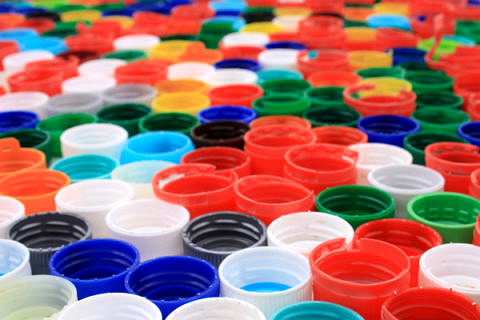Tracking down the scent of recycled plastic
Young FAU researcher studies smells of plastic waste used for manufacturing recycled plastics
Recycling plastic has an important role in sustainable manufacturing. However, there are still barriers to using recycled plastic not only because of its material and processing properties but also because of its smell. A young researcher at FAU has now studied what causes recycled plastic to smell.
Each year several tons of plastic waste are produced in Germany, for example from packaging. Around 50 percent of this waste is burnt. Recycling and reusing this waste could protect the environment in the long term and conserve fossil resources. However, recycled plastic is still not used enough in manufacturing due to undesirable contaminants. The Fraunhofer Institute for Process Engineering and Packaging (IVV) is developing and enhancing recycling processes for mixed post-consumer plastic waste. FAU doctoral candidate Miriam Strangl is studying the scents of plastic waste and recycled products to find the cause of unpleasant odours in a collaborative project with the departments of Sensory Analytics and Process Development for Polymer Recycling at the Fraunhofer Institute. Strangl characterises samples through an olfactometric and analytical approach by evaluating the quality and intensity of their scent. After this, she deciphers the odorous substances and identifies them.
A fine nose
Strangl’s highly-trained nose is key to deciphering these odourous substances in her doctoral research which is supervised by Prof. Dr. Andrea Büttner (Professor for Aroma Research at FAU). She can identify the molecules of a range of compounds by their smell alone and confirms these findings through chemical analysis. ‘The different substances found in plastic packaging waste have a number of different smells. These include mouldy, cheesy or acidic smelling molecules,’ explains Strangl. ‘We were able to identify some of these strong-smelling contaminants in plastics for the first time ever. In addition, the results showed that, apart from odorous substances from previous contents such as food or cleaning agents, other processes might also lead to the unpleasant odours’ says Strangl. In addition to microbiological decay, this also includes aging plastics or the decomposition of residues from manufacturing such as solvents. The findings of the study will help scientists to develop strategies for reducing odours in recycled plastics.
The results of the study were published in the Journal of Separation Science under the title: ‘Characterisation of odorous contaminants in post-consumer plastic packaging waste using multidimensional gas chromatographic separation coupled with olfactometric resolution’. DOI: 10.1002/jssc.201601077
Further information:
Miriam Strangl
Phone: +49 8161 491 312
miriam.strangl@fau.de
